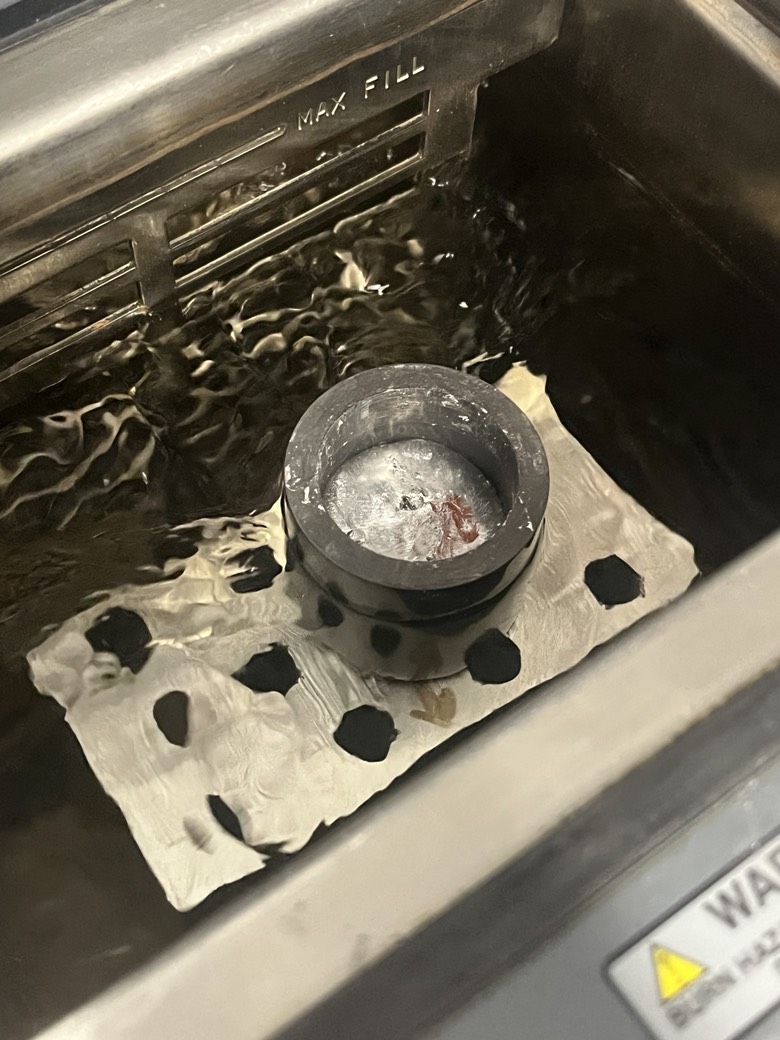SBOA600 July 2024 ISOTMP35
2.2 Step 2: Prepare the Liquid Gallium
The boards being testing use no high voltage signals, but use a 1 square inch copper pad to mimic a high voltage heat source. The board is submerged in the liquid gallium, to fully submerge the copper pad only. The liquid gallium is poured into the crucible, coming up to the bottom of the ABS lid. The same amount of liquid gallium is poured each time, making sure that the test conditions are consistent between runs.
 Figure 2-2 Empty Crucible
Figure 2-2 Empty Crucible Figure 2-3 Crucible Filled with
Liquid Gallium Placed in Oil Bath
Figure 2-3 Crucible Filled with
Liquid Gallium Placed in Oil Bath